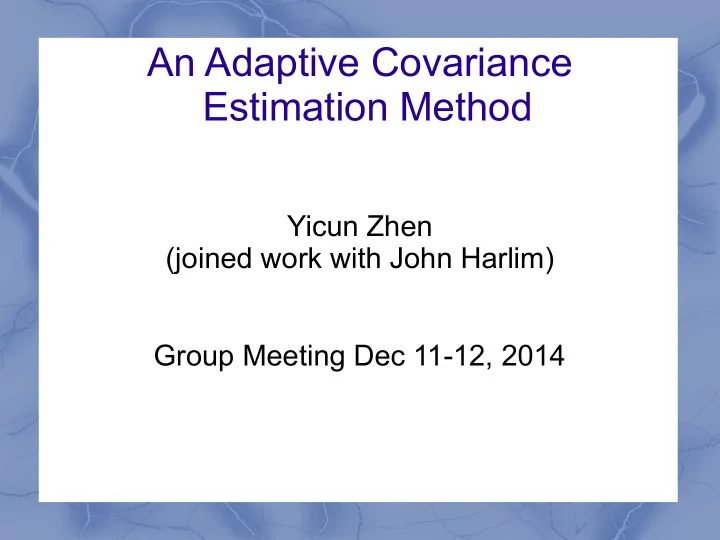

An Adaptive Covariance Estimation Method Yicun Zhen (joined work with John Harlim) Group Meeting Dec 11-12, 2014
Outline ● Mathematical formulation ● Belanger's method ● A modified version of Belanger's method ● Numerical results ● Future work
Mathematical formulation Deterministic model ● True model: operator State variable System noise (random variable)
Mathematical formulation ● Observational model: Observation observation Observation noise operator
Mathematical formulation ● Goal: find out the variance of and , which are denoted by Q and R. ● This is different from the model error problem.
Belanger's method ● Construct a new set of “observations” for Q and R from the existing observations: Observation Observation at time t_n at time t_{n-l}
Belanger's method This newly constructed observations satisfy: ● 1, linear ● 2, can be computed recursively.
Belanger's method Process: 1, primary filter (Kalman filter) 2, secondary filter: implement Kalman filter on the observation model: to estimate Q and R.
A modified version of Belanger's method ● Starting from the relation: ● consider ● and solve it directly using least-square method.
A modified version of Belanger's method ● Without computing the variance of the newly constructed observations, it is computationally cheaper than the original Belanger's method.
Numerical results ● Results with Lorenz96 model: ● 20 observation, R=I, Q=0.5dt
Numerical results
Future work ● First Implement this with Sequential Kalman filter/LETKF.
Recommend
More recommend